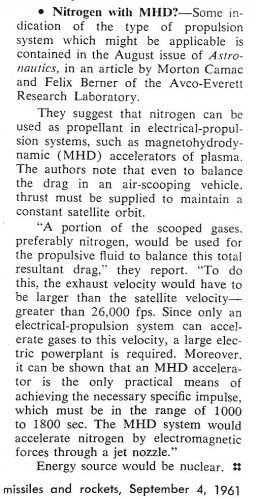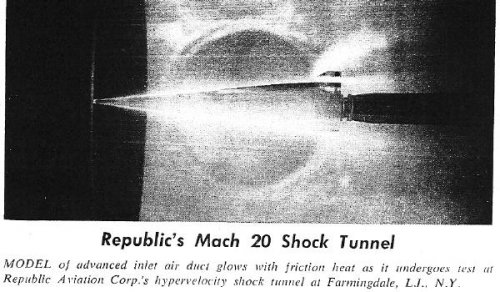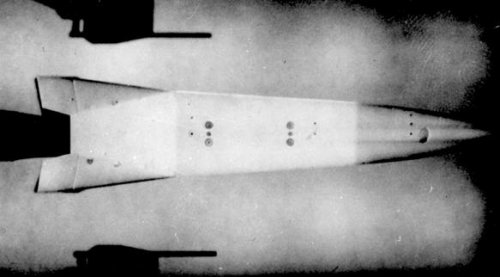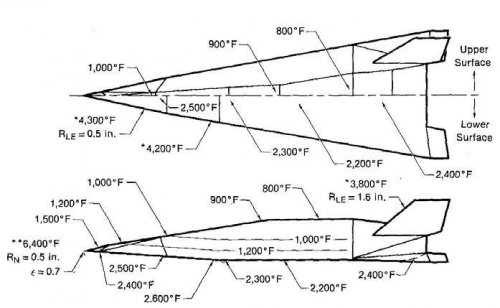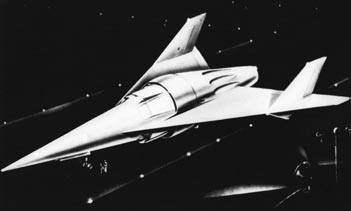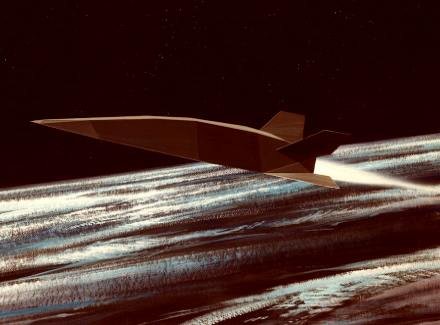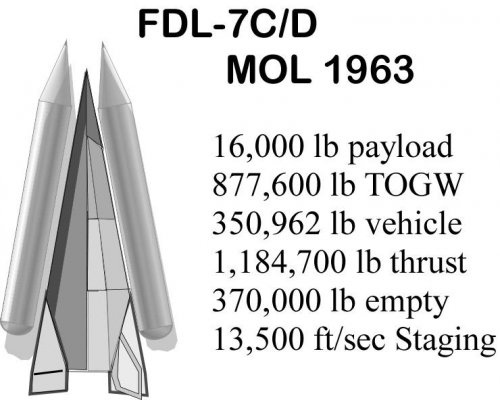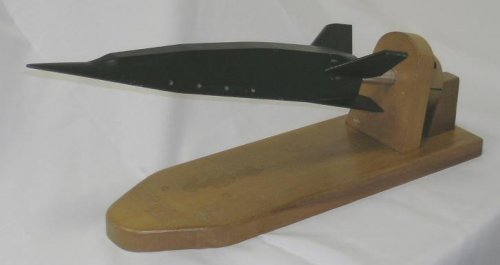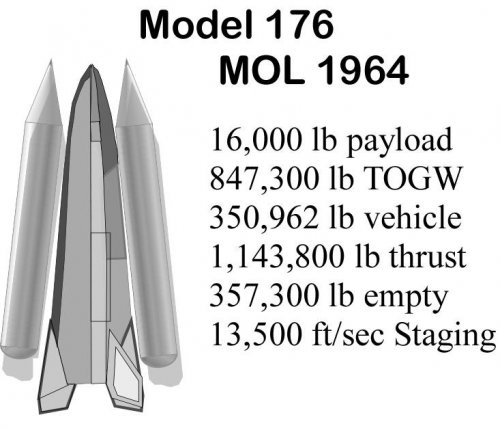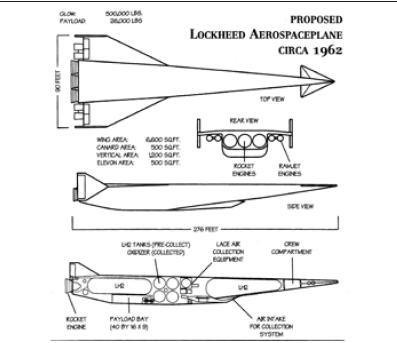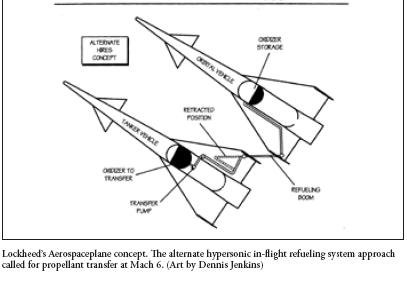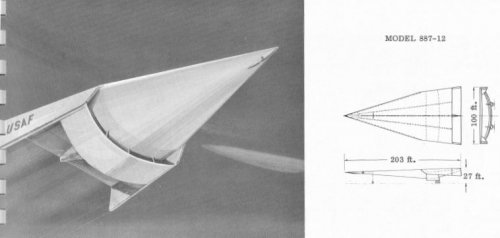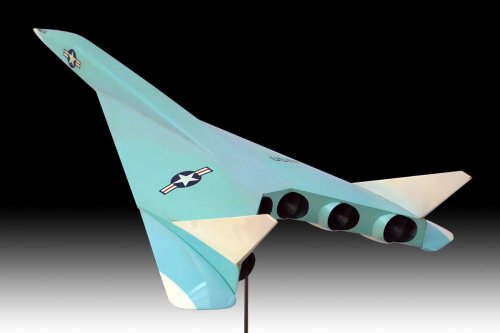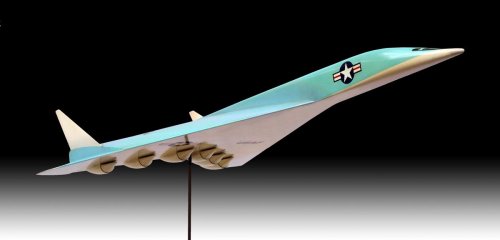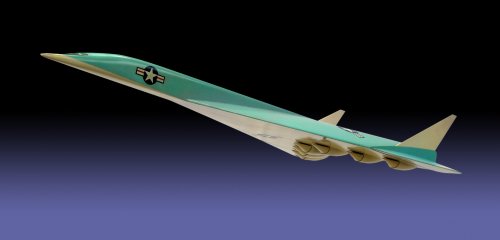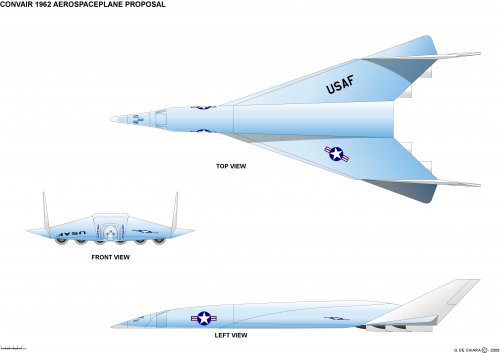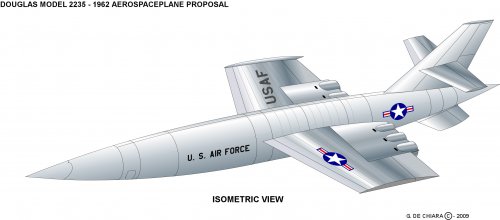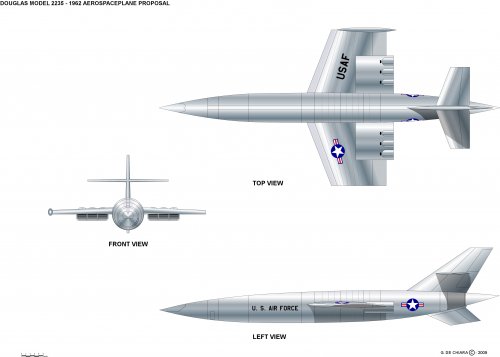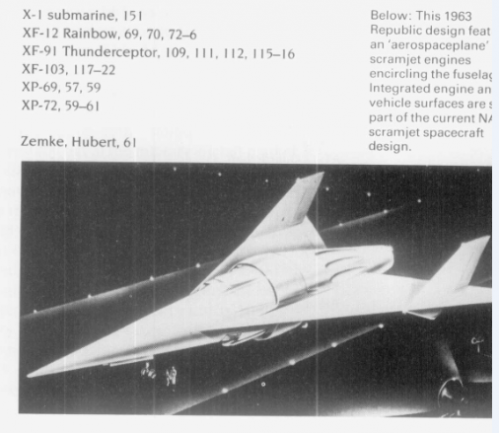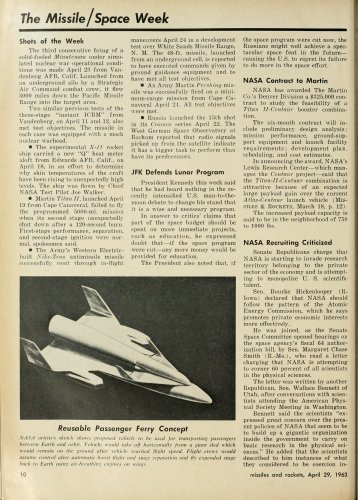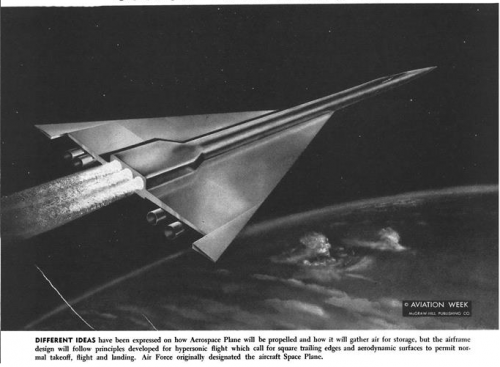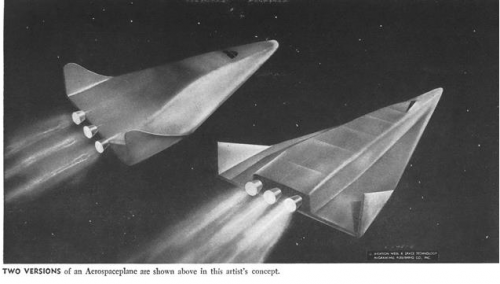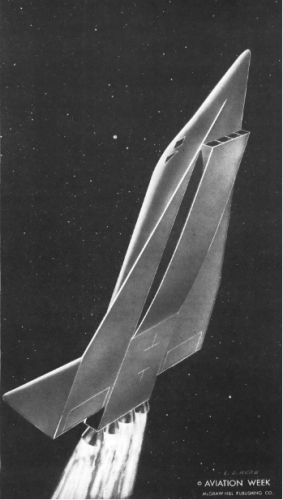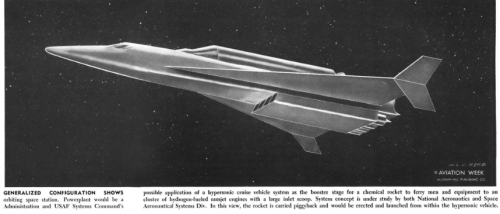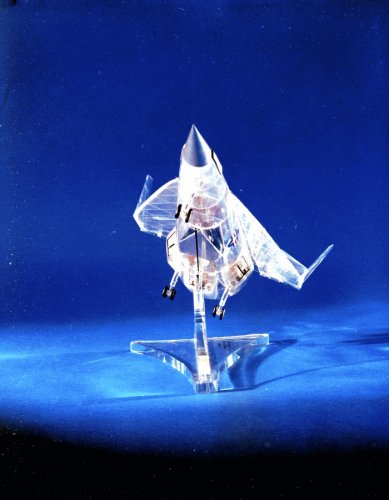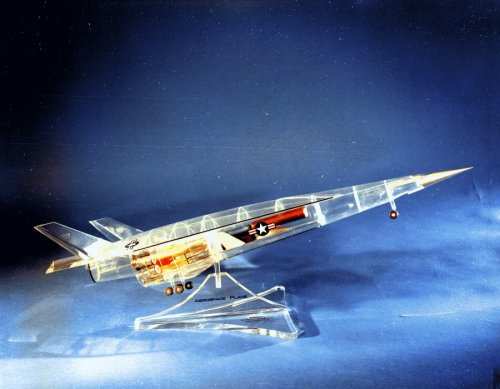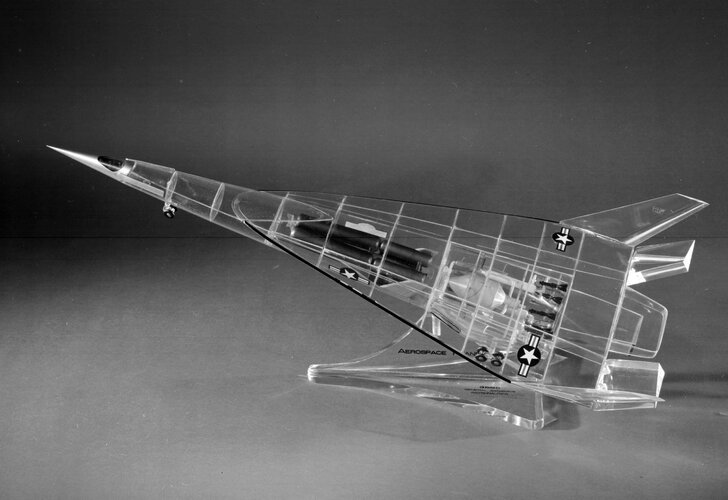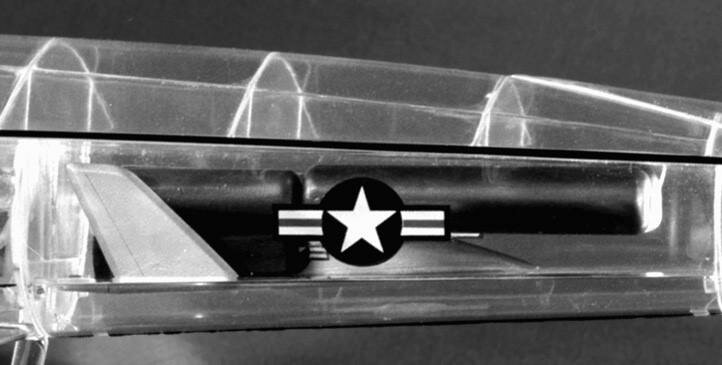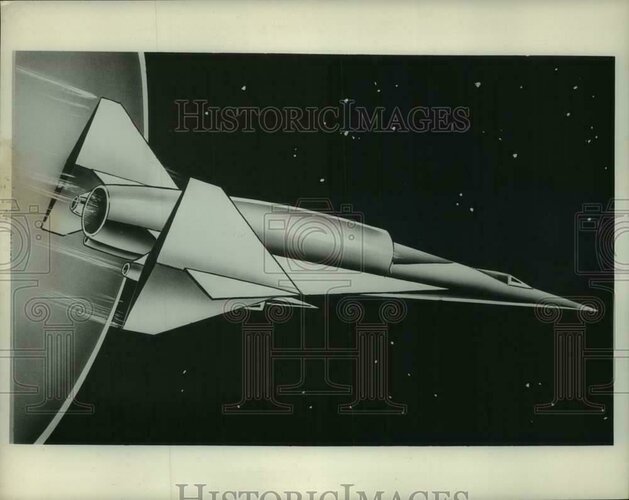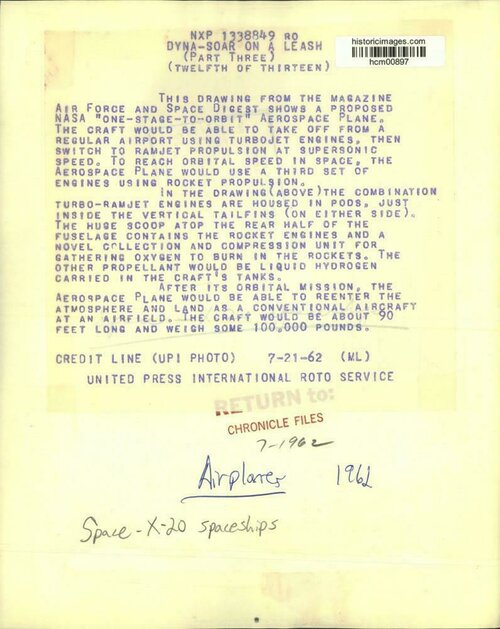Archibald said:
In his seminal shuttle book Dennis Jenkins briefly mentions the HIRES scheme - Hypersonic Refueling ! does anybody knows a little bit more about that concept ?
About HIRES specifically, no.
But, mid-air refuelling is just part of it.
LTV studied a more general capability they called Atmospheric Rendezvous in which mid-air refueling
was just one possibility. See AIAA paper 72-134 by Bird and Schaezler; "Aerospace Applications of
Atmospheric Rendezvous".
To give you an idea, of the application of these concepts, for example to a 2-stage orbital vehicle.
These concepts would permit the first stage or second stage to be designed and constructed without
certain low speed elements such as wings, landing gear, air breathing hypersonic, supersonic or
subsonic propulsion for cross range or ferry. Such vehicles would be received in atmospheric flight by
a carrier aircraft to perform those aspects of the mission. Significant reductions in gross lift off weight
are possible employing aircraft as a carrier or tow vehicle.
Interesting paper!

